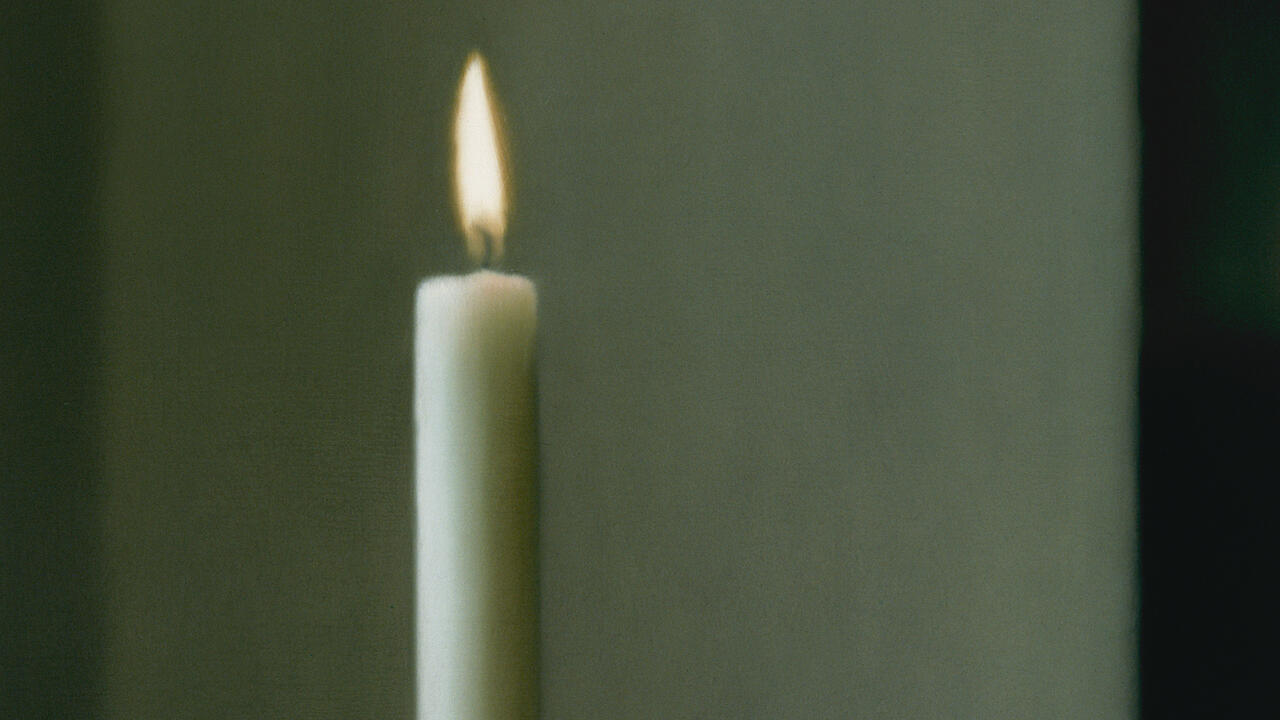Asim Waqif Installs a Tornado in Freeze-Frame
The sculpture, on view at Palais de Tokyo, uses materials discarded at the end of the previous exhibition
The sculpture, on view at Palais de Tokyo, uses materials discarded at the end of the previous exhibition
Viewed from above, Asim Waqif’s installation at the Palais de Tokyo, Bordel Monstre (2012), resembles a tornado in freeze-frame, a perfect storm sweeping up plastic chairs, packing crates and dying crops without discrimination. For fans of The Wizard of Oz, such a sight is an invitation to dream, to enter another world. But Waqif's installation is not meant to be viewed from above – or at least not only – but stepped into and explored. Wherein it becomes a kind of living creature, responding in different ways to different explorers, bellowing and belching through partially concealed speakers, shaking and stirring as you make your unsteady passage through its thatched belly.
Bordel Monstre is a fascinating exercise in making use of things otherwise neglected: constructed in a corner of the Palais de Tokyo which hasn’t previously been used, made out of materials discarded at the end of the previous exhibition. And if its exterior form resembles the damage wrought by a force of nature, its construction was as spontaneous and unplanned as the weather. Faced with a lot of discarded empty wooden frames – all straight lines and right angles – Waqif knew that he wanted to build curves. Beyond that, he simply started building one day on site, starting at the 'mouth' by which the public enters this rubbish-dump beast (which would be one way of translating its title) and working from there, sometimes alone, sometimes aided by local students and a trio of engineers – from both Paris and his native India.
Waqif was trained as an architect in Delhi, and later worked in film before developing an artistic practice that incorporates elements of both. He has exhibited extensively in Delhi, Mumbai and Kolkata, frequently on temporary, site-specific projects in abandoned spaces; but this installation – the result of an autumn residency at SAM Arts Projects – marks his first major intervention in a European gallery. With its ad hoc assembly and concern for recycling, Bordel Monstre shows some affinity with the ideas of Yona Friedman. Likewise Waqif shares with Friedman a sense of play filtered through a kind of cybernetic faith in open systems.
From the moment you pass the sign reading ‘Enter at your own risk’ on the way in, however, the art-historical moment most clearly evoked by this work is the sTigma Environmental Exhibition held at Better Books in London in the heyday of Happenings in 1965. Collectively authored by Phil Cohen, Bruce Lacey, John Latham, Keith Musgrove, Jeff Nuttall, Heather Richardson, Criton Tomazos, Dave Traceand Islwyn Watkins, sTigma shared with the present work its combination of junk and tech; its exploratory, intermedial form; and a vertiginous sense of personal risk. As one tiptoes nervously through Waqif’s rickety structure, there is the constant sense that it all might just collapse around you at any moment. High-heels are not advised, and children under five are barred from entrance – which is a shame, because they'd probably love it.
In his brief introduction to the work before those huddled around it on the night of the press opening, the artist referred to electronics as ‘an experiential medium’ in comparison to painting or sculpture (both visual media). It is increasingly clear – post-Duchamp, post-Fluxus, post-Relational Aesthetics, post-video-game-art – that this kind of equivalence is becoming a new kind of common sense, endowed with the kind of near-universal obviousness that only the foolish or very brave would dispute. It is notable, however, that Waqif tends to hide his electronics – the only ingredient bought and not found – weaving the wires amongst the wicker and miscanthus grass with rather more care than the hoover bags and biscuit tins.
Though we might shake an empty can of Kronenbourg or tread on a particular palette to instigate some noise or other, this piece also invites audience participation in a more traditional way. The work combines not just the detritus of the museum itself but also whatever the artist himself accumulated over the months he spent working on the piece. So we find ourselves inexorably drawn into a game of detectives, re-constructing his life from his empty cigarette packs, his airport luggage tags, his old receipts. Being, however, conscious of this as he lived and smoked and travelled and shopped, one can't help but wonder to what extent he edited and sculpted his life, however unconsciously, to construct a biography he would want uncovered. On this level, at least, there hovers the spectre of the kind of fictive autobiographies of Sophie Calle or Annette Messager.
The work is ‘an archeology of trash’, claimed its author. When asked what will happen to it when the exhibition ends in January, he responds in an instant: it goes back in the garbage, ‘unless anyone is stupid enough to want to buy it!’





















